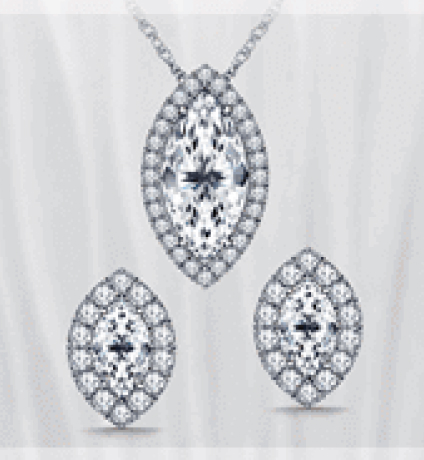- 0% APR Financing Available for up to 3 months*
-
Lifetime Upgrade
We are committed to serving our customers not only for a sale, but during a lifetime.
More Info
-
Jewelry Warranty
For your peace of mind, all B2C Jewels items are covered by a 1-year warranty.
More Info
-
Price Match Gaurantee
B2C Jewels is committed to offer the best price available on certified diamonds.
More Info
Education
Your Guide to Become a Jewelry Expert
Quality Factors

Like diamonds, there are many factors that affect the quality of a gemstone. Let us study each of these factors in detail and understand how they help us judge the gemstone’s quality.
Color
For every gem variety, color is the most important value factor which is evaluated in a similar way for each gem. The jewelry industry recognizes the quality of gemstones by these three components of color:-
- Hue : Hue is described as the shade of a color.
- Tone : Tone is the relative lightness or darkness of a hue.
- Saturation : Saturation refers to the degree to which the gem is free from brown or grey hues. The most desirable gemstone which shows least grey or brown is often described as having vivid or strong color saturation.Gemstones come in all possible colors of the spectrum, but also one gemstone itself can come in variety of different hues and shades. Garnet for example, is available in every possible color, while Sapphires are also available in shades of pink and yellow apart from the usual blue.
Note: Gemstones may have been treated to improve their appearance or durability and may require special care.
Clarity
The term clarity means purity of a gemstone and freedom from the tiny internal characteristics and impurities that affect the refraction of light rays hence reducing the brilliance of the gemstone. Clarity plays a major part in determining the quality of a gemstone which in turn helps in its evaluation. Pale or pastel shades of gemstones easily show the flaws and are therefore not in demand. Slightly included gemstones fetch a very good amount while flawless gemstones are very rare and hence carry huge prices.
- Inclusions and Value : As gemstones are formed by natural process, they may include some impurities within them called as ‘inclusions’. These inclusions are the individual characteristics of every stone and hence are also referred to as ‘birthmarks’. Few inclusions become a part of the gemstone character and add an exotic touch of design to the gemstone. Emerald and Red Tourmaline are seen with such natural inclusion, whereas Citrine, Green Tourmaline and Aquamarine are usually flawless. Very small inclusions are invisible to the naked eye, making the gemstone rare and equally expensive.
Carat Weight and Rarity
Gems are sold by their weight and not by their size. The measurement used to weigh them is carat, which is one-fifth of a gram. Different gemstones have different densities (mass per unit volume), so two gems that appear to be of the same size may actually have different weights. For example, a one-carat Emerald and a one carat Ruby may have same weight but will not have the same size because each is a different mineral with a different density.
Emerald, Ruby, Sapphire and Tsavorite Garnet are some gemstones which rarely are seen in large sizes. Large sizes of these gems demand very high price per carat when compared to its smaller counterparts. Whereas Amethyst, Citrine, Blue Topaz and Amber are easily available in large sizes and therefore quote normal price per carat like their smaller sized stones.
Cut and Beauty
Gemstones are a masterpiece of nature, but it's the skilled hard work of the gem cutter that unleashes its Brilliance (amount of white light returning to the eye from a gemstone) and Beauty (the visual appeal which is a combination of color, cutting quality and surface appearance).
When we talk about cut we refer to two different things.
- The three dimensional shape it is designed in, e.g. the marquise shape, round cut, oval cut, etc.
- The brilliance and beauty reflected by the quality of cutting associated with the precisions of the angles and proportions of workmanship. It is the way a gemstone reflects light and captures attention.
Symmetrical cuts and colorful light reflections with no dark or washed out areas represent the ideal characteristics of a good cut while an asymmetrical cut talks of its low quality.






